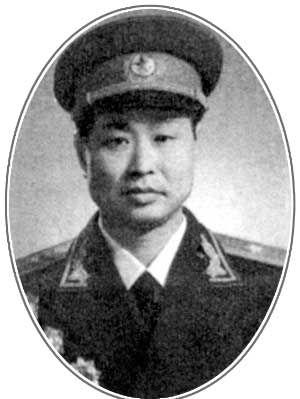Fang Huai, born in 1917, was originally named Lai Fanghuai, and was once known as Lai Shilu. A native of Yudu County, Jiangxi Province. He joined the Red Army in 1932 and joined the Party in 1933.

Fang Huai is one of the "aviation fires". After the founding of the People's Republic of China, he successively served as the director of the Aircraft navigation department of the Civil Aviation Administration, the manager of the Chinese Civil Aviation Airlines, and the deputy commander of the Air Force of the Wuhan Military Region, and was awarded the rank of major general in 1955. He was awarded the Order of August 1, Second Class, the Order of Independence and Freedom, second class, the Liberation Medal of the Second Class, and the Medal of Merit of the Red Star of the First Class.
He was born in 1917 to a poor peasant family in Yinkeng Ping'an Village, Yudu County, Jiangxi Province. He joined the Children's League at the age of 12 and joined the Communist Youth League of China two years later. In February 1932, at the age of 15, Fang Huai signed up for the Chinese Workers' and Peasants' Red Army, and in 1933 he was transferred from the regiment to the Communist Party of China. He successively served as an officer of the Field Hospital of the First Red Army, a youth officer of the RegimentAl political office, the chief of the Youth Section of the Division's Political Department, the deputy chief of the Organization Section of the Division's Political Department, and the director of the Youth Department of the Corps' Political Department.
After the beginning of the War of Resistance Against Japanese Aggression, the Xinjiang warlord Sheng Shicai, under the influence of the National Anti-Japanese War, once became an ally of the Communist Party's anti-Japanese national united front. With the assistance of the Soviet Union, he opened an aviation education class attached to the Xinjiang Border Defense Air Force. In order to train plastered flight personnel and prepare for the establishment of the People's Air Force in Japan.
April 8, 1938, was a day that Fang Huai would never forget. On this day, 25 Red Army soldiers, including Fang Huai, flew into the blue sky for the first time. They carefully learned from the instructors, repeatedly pondered, and trained rigorously, and the trainees would soon be able to fly alone.
In 1942, due to changes in the situation, Sheng Shicai betrayed his faith and defected to Chiang Kai-shek, revealing the reactionary nature of the murderous demon king, and more than 140 CCP members, including the air force, were all imprisoned by him, and Chen Tanqiu, Mao Zemin, Lin Jilu and others were brutally killed by him. The rest of the comrades, including Fang Huai, were rescued by the Party Central Committee through Zhang Zhizhong in many ways before returning to Yan'an in 1946.
After Returning to Yan'an on July 12, 1946, Fang Huai was ordered to go to the northeast after a short period of reorganization and participate in the work of establishing the first aviation school of our army. At the beginning, Fang Huai served as an assistant of the Training Office of the Aviation School, and later served as the captain of the fourth flight brigade and the director of the Aviation School's office in Shenyang.
In September 1949, Chairman Mao and the Party Central Committee and leading comrades decided to let the fledgling People's Air Force participate in the military parade ceremony of the founding ceremony and accept the review of the Party and the people. When Fang Huai and his comrades-in-arms accepted this glorious task from Nie Rongzhen, commander-in-chief of the founding ceremony parade, they immediately discussed the parade plan at Nanyuan Airport, conducted a comprehensive and serious study on the selection of pilots, the organization of aircraft types, and the response to possible emergencies, and drew up a detailed plan for the parade flight exercise.
At about 4:00 p.m. on October 1, 1949, Fang Huai, Liu Shanben, and Xing Haifan each led a flight echelon from Nanyuan Airport and flew from east to west over Tiananmen Square to accept the inspection of the party and the people. When they flew over Tiananmen Square, Fang Huai waved their wings three times to express the wishes of all air force commanders and fighters, paying tribute to the party and state leaders and the people of the capital.
After the founding of the People's Republic of China, Fang Huai successively served as the director of the Aircraft Navigation Division of the Civil Aviation Bureau of the Central Military Commission, the director of the Operations Division of the Air Defense Force Headquarters, the director of the Navigation Affairs Department and the Director of the Telecommunications Department of the Civil Aviation Bureau of the Central Military Commission, the manager of the civil aviation Chinese, the principal of the Third Aviation School of the Air Force, the commander of the Air Force division, the deputy commander and commander of the Army, and the deputy commander of the Air Force of the Wuhan Military Region.
On December 30, 1951, Chairman Mao issued an order appointing him as the president of the Second Civil Aviation School of the Civil Aviation Administration of the Central Military Commission (the predecessor of the Civil Aviation University of China).
In 1955, Fang Huai was awarded the rank of major general. He was awarded the Order of August 1, 2nd Class, the Order of Independence and Freedom 2nd Class, the Liberation Medal 2nd Class, and the Order of Merit of the Red Star 1st Class.
In 1983, Fang Huai left for retirement. After leaving retirement, the veteran general is still very concerned about the major affairs of the party and the state.